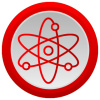What would you say to paying 30% more for your waterborne primer and topcoat? Most purchasing agents and COO’s would look the other way and continue with their current supplier.
What if paying 30% more would result in a 20% operational cost reduction? You’d have to look twice at that proposition, even if with great skepticism.
Keep reading if you want to learn more about how this is possible.
Case studies are usually informative but can be viewed as unique events that may not apply beyond that isolated incident. But when a case study is repeated many times, it’s no longer a unique event and really shouldn’t be considered a “case study” – but that’s where we’re going to begin.
The event we’re going to share illustrates a process that has been repeated so many times that it’s become a standard process for our company. It’s important for those seeking to simply “get it right” and achieve the success they’ve been targeting for years.
Background: Uncovering the “Best of the Best”
We began a relationship with a very large wood component manufacturer as a technical resource. The team was experiencing great frustration with its current supply of waterborne primer and paint. The problems were around a lack of consistent quality with respect to viscosity, color, gloss, and other properties. The current supplier also lacked the ability to correct these issues in a timely manner.
Initially, the manufacturer’s team simply wanted to know if they were expecting too much or not enough from waterborne technology. Knowing that we were an industrial coatings manufacturer as well as a technical resource, they asked if we had anything to offer. We provided samples of our waterborne primer and topcoat. A few weeks later, the manufacturer requested a face-to-face meeting.
The representatives from the manufacturer pointed out that they are frequented by several coatings suppliers, large and small, hoping to sell their primer and paint. To weed through all of these pitches, they have an internal group seeking to identify the best primer and paint in the industry. The group is charged with a simple mandate: “If you find it, you MUST use it.”
Our meeting had a happy ending (even though it was only the beginning!) The team declared that Van Technologies, with their GreenLight CoatingsTM brand, manufactures the best primer and topcoat they had ever tested.
“Chemechanical” Integration: Overcoming Skepticism
We next completed many repeat tests to confirm our product’s consistency, batch to batch. We could then move towards full implementation of our primer and paint system within this company. We agreed to make the transition on a plant-by-plant basis (to identify and manage any issues that may surface) before making a full, company-wide change.
While each facility had similar process environments, our experience has shown that there are inevitable, subtle differences that require unique adaptations. The “Chemechanics” of each facility will need proper integration to configure the coating chemistry, the mechanical factors present in the finishing line, and the operators that run the line. These professionals all tend to have personal preferences when running their lines!
The finish line manager and operators at the first facility were very skeptical. They knew that they needed to comply with the corporate team’s decision but freely mentioned, “We’ve been down this road before, and nothing came of it.”
This is a familiar situation. The introduction of a new coating is usually met with reluctance as past experiences have not produced the desired level of overall performance.
“Chemechanical” Integration: Setting Up the Line
This facility’s finishing process consisted of a lineal automatic spray line. Operators would feed the line with moldings, and they would pass through a prime coat section followed by a topcoat paint section. Each section included a profile sanding station followed by a brush head vacuum cleaner, then a spray booth equipped with HVLP guns, and, lastly, an infrared forced air lateral transfer oven.
There are a number of variables or factors to consider when setting up a line to yield a quality finish. To illustrate our “Chemechanics” in this case study, let’s take a closer look at the HVLP spray guns and the drying process.
“Chemechanical” Integration: HVLP Spray Guns
We charged the primer and topcoat into the system. Each of the HVLP spray guns in both booths (primer and topcoat) were patterned for quality. We fitted each gun with a 1.4 mm nozzle orifice to support the component wet film thickness and finishing quality relative to the targeted conveyor speed for productivity.
We next performed pattern tests,using a sheet of cardboard perpendicularly positioned under each spray gun at the approximate distance the linear moldings would be. Each gun was triggered momentarily to produce a very short burst of coating spray. We made adjustments to yield a pattern showing a wet, symmetric elliptical shape that was surrounded by a fine, cloud like mist.
“Chemechanical” Integration: Drying Process
Knowing that the proper wet film thickness would be uniformly applied at the targeted rate to support the process line speed, we could move onto profiling the drying ovens.
Using a thermal profiler, we made adjustments to provide optimum drying of the applied coatings. The picture below shows the resulting profile used for the topcoat paint. As shown, there is a total drying duration of approximately 5 minutes where the component surface temperature reaches a maximum of approximately 125 oF.

“Chemechanical” Integration: Monitor and Confirm Completion
After establishing these and other process parameters and factors to yield the best finish possible, we remained on-site for the remainder of the day to monitor production and to address any operator questions.
After that, we spent 1-2 days every week for two weeks to monitor the process. No significant adjustments were necessary, and we were so pleased to see the transformation!
The skepticism present during the initial trials vanished and the team had a firm appreciation for our “Chemechanics.” In fact, the finish line manager mentioned that they frequently came to work hoping the finish line would produce the daily quota… but now, they came in knowing it would!
From our perspective, it’s a pleasure to provide good people with a good product to predictably produce a high quality finish.

Results: Net Cost Savings and Significant Quality Improvement
After about 6-8 months, we had successfully transformed several facilities for the company. We met again with corporate management. They started the finishing process review with a statement from purchasing indicating that the price per gallon of our system represented a 30% higher cost relative to that of the previous supplier.
Their CFO quickly pointed out, however, that the cost of finishing operations has decreased 20%. Their reject ratios were now of little significance – whereas prior to the transition, they hovered around 8%. The average yield of finished components was markedly improved due to significant reduction in downtime and changeover.
The COO added that they were achieving consistent color, gloss, viscosity and other vital factors that collectively provided the best quality on record. The CEO concluded the review stating that it isn’t about dollars per gallon and that they anticipate an annualized savings well over $100,000 just by using the right product for their finishing operation!
We helped this industrial finisher achieve a greater level of success by balancing “Chemechanics” and simply “getting it right.”







